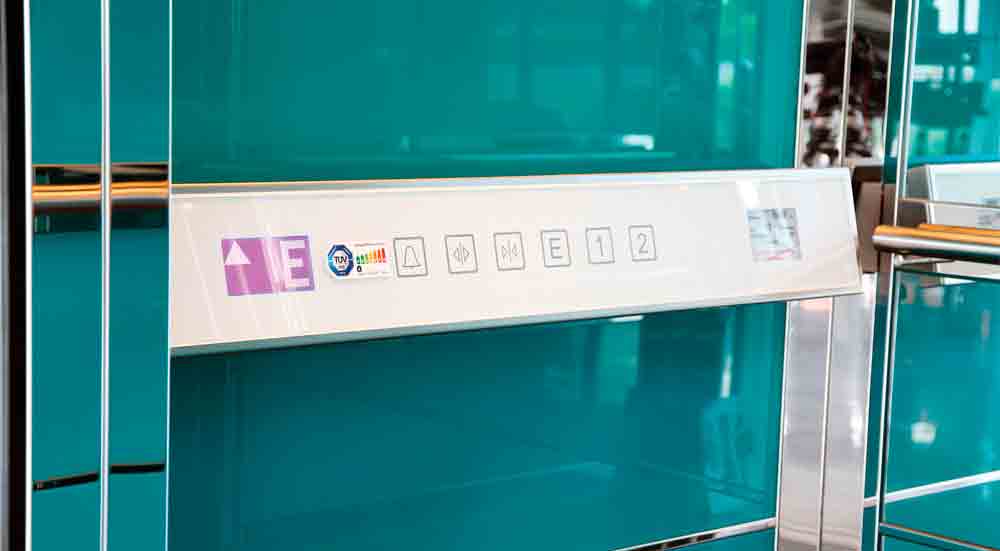An Approach to Achieving Class “A” Certification for Complete Lift Solutions
Apr 1, 2012

An exploration of the development of energy-efficient lift packages for new installations and modernizations
Energy consumption and ecological issues are high on the agenda of elevator-industry products, pushed by environmental awareness and forecasts of increasing energy costs around the world. By being able to supply components for complete lift solutions, Wittur is in a position to develop energy-efficient lift packages for new installations and modernizations.
Rising Urbanization Pushes Energy-Efficiency Developments
According to the United Nations Department of Economic and Social Affairs, the level of global urbanization is expected to rise from 50.5% in 2010 to 69% in 2050, with the global urban population rising from 3.5 billion in 2010 to 6.3 billion in 2050. The major growth in cities has led to the need for the Kyoto Protocol, which aims to reduce CO2 emissions and energy consumption by at least 20% in the European Union (EU) by 2020.
The lift industry has become increasingly conscious of its responsibility to make products more energy efficient. After all, 40% of energy is consumed in buildings, while lifts and escalators use only 3-8%. With the rising number of lift installations and modernizations, the elevator industry has great potential to improve energy savings. Studies on standard residential buildings indicate that 70% of the energy elevators use is consumed when they are in standby operation, compared to only 30% when traveling.
The lift industry has been proactively developing standards to encourage the design of energy-efficient components and systems. For example, Energy Performance of Buildings Directive 2002/91/EC, 2009/125/EC and 2005/32/EC were developed to set eco-design requirements for energy-related products by implementing demands made by the Kyoto Protocol. The Directive 2009/125/EC (also called ErP) has already been transposed into German natural law as the Energy Performance of Buildings Directive VDI 4707 and was developed to supply a measurable index of compliance with the aforementioned directives. It has been in force since March 2009.
The E4 Research Project was launched in the EU to measure power consumption and the potential energy savings for lifts and escalators. The same attention to energy efficiency of lifts has been shown in the U.S. through research and white papers such as “Opportunities for Elevator Energy Efficiency Improvements,” published in 2005 by the American Council for an Energy-Efficient Economy, and the recent “Better Buildings Initiative,” to improve energy efficiency in commercial buildings across the U.S.
Wittur’s Approach
In keeping with its philosophy of ecological responsibility, Wittur focuses its R&D activities on safety engineering, accessibility solutions and energy-efficient lift components. Supplying most of a lift package’s necessary components allows energy efficiency to be reached from various standpoints.
The following includes lift components with energy-saving potential.
Doors
Using door drives with permanent-magnet synchronous motors in connection with efficient planetary gears lowers energy consumption by up to 60% compared to that of conventional designs with asynchronous motors triggered by variable voltage, variable frequency with gearless systems. Wittur’s new MSD1 range of commodity doors for residential lift applications have an energy consumption of only 11 W (ELEVATOR WORLD, February 2012). Furthermore, Wittur’s intelligent controllers are capable of turning the door drive off when the lift is not in operation without impairing travel convenience, safety or waiting times. This means that standby operation power consumption of 0 W can be achieved.
D-Pack Drive Package
Wittur’s D-pack drive package is an energy-efficient combination of GLD frequency inverters and a gearless drive from the WSG-S series. The system is easy to set up and optimizes the gearless drive in a complete lift installation by storing all required drive parameters. For quick installation, select from the inverter display of the drive to be connected and make a static (full-load) motor tuning. Optimal settings for energy consumption are available during setup. In comparison to geared drive installations, the D-pack drive has a motor power reduction of more than 40%.
Hydraulic Drives
Electronically controlled hydraulic drives can offer a 30% reduction of energy consumption, and frequency-controlled hydraulic pumps have a savings potential of 40%, when compared to mechanical pump units. Wittur’s hydraulic drives feature a logo (an “A” in a round arrow), which highlights its energy efficiency and environmental awareness.
Car Lighting
Installing LED car lighting can provide an energy savings of up to 75% compared to that of fluorescent lamps. In addition, LEDs have a longer lifetime.
Car Slings
Additional savings can be achieved by using weight-reduced constructions and materials, which combine detailed engineering with finite-element method components and system analysis.
Class “A” Certification
Combined, these technologies provide energy-efficient lift solutions. Wittur was among the first manufacturers to obtain VDI 4707 Class “A” energy certification from TÜV SÜD for three of its machine-room-less lift systems.
The energy-efficiency certification process is divided into three steps. In step one, the lift-use category is defined depending on number of trips per day and the average travel distance. To determine standby energy consumption, the energy consumption and use of all electrical components, which ensure the lift is ready for operation during standby, and use are measured. During step two, the total energy consumption in a defined test cycle is measured. In the third step, all specific consumption data are collected and compared with the reference values in VDI 4707, and a certificate with the appropriate energy class is issued.
As a result of these developments, energy efficiency is now incorporated into the standard range of Wittur lift solutions.
Get more of Elevator World. Sign up for our free e-newsletter.









